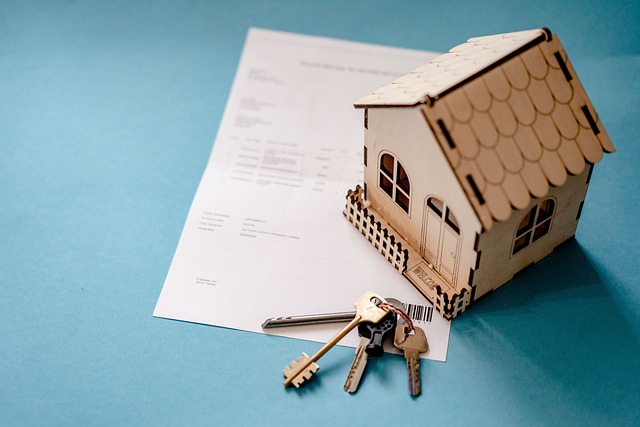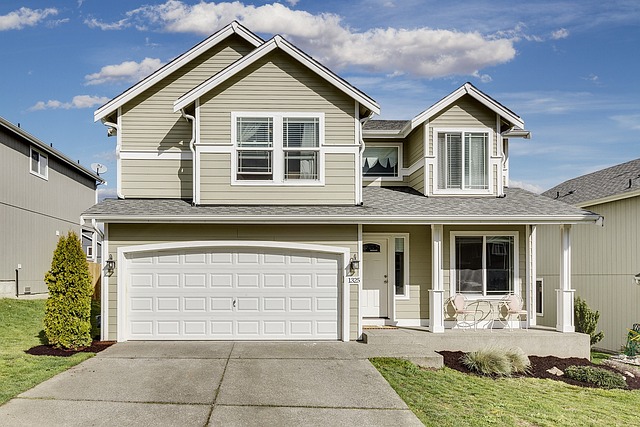2023 has seen the Executive Condominium (EC) market in Singapore continue its trend of price appreciation, reflecting a complex interplay between evolving demographics, government housing grants, and strategic land releases. The ECs serve as an affordable housing option for first-time homebuyers between HDB flats and private properties, with their unique resale value back to the HDB after a set period. This year, the market has been influenced by factors such as demand from middle-income earners, macroeconomic conditions like interest rates, and regional developments that enhance desirability and accessibility, particularly in areas like Sengkang and Punggol. The consistent price growth of ECs is expected to persist due to high demand, controlled supply, and Singapore's robust economic climate, making them a promising long-term investment for those navigating the property market. Prospective buyers and investors are advised to keep abreast of housing policies, demographic shifts, and government initiatives that can impact pricing and market sentiment in this dynamic segment of Singapore's real estate landscape.
Intrinsic to the dynamic Singapore real estate landscape, Executive Condominiums (ECs) have charted a distinct path in terms of price appreciation over the years. This article delves into the historical evolution of EC prices, pinpointing key factors that have influenced their growth trajectory. Through an analysis of price trends across various regions within Singapore, we uncover regional disparities and drivers of change. With insights drawn from past performance, we offer projections for future EC price movements, providing valuable foresight for investors and prospective homeowners alike. The journey of Executive Condominium Singapore prices is a testament to the city-state’s vibrant property market, revealing patterns that underscore investment decisions and living preferences in this Southeast Asian hub.
- Historical Evolution of Executive Condominium Prices in Singapore
- Factors Influencing Price Growth in ECs Over Time
- Analysis of EC Price Appreciation Trends Across Different Regions in Singapore
- Projections for Future Price Movements of Executive Condominiums in the Singaporan Market
Historical Evolution of Executive Condominium Prices in Singapore

Over the years, the prices of Executive Condominiums (ECs) in Singapore have undergone a significant transformation, reflecting broader trends within the property market. Initially conceived as a hybrid housing option between public and private properties, ECs were introduced to offer first-time homeowners an alternative to HDB flats with the potential upgrades to private properties later on. The historical evolution of EC prices in Singapore has been influenced by factors such as economic growth, population dynamics, and government policies aimed at stabilizing the property market and ensuring affordability for middle-income households.
The trajectory of EC prices is a telling narrative of the nation’s socioeconomic shifts. From their inception in 1995 to the present day, EC prices have risen substantially, albeit with periods of stabilization or declines. For instance, during the financial crisis in 2008 and the global economic downturn in 2014, EC prices experienced a softening phase. However, as Singapore’s economy recovered and the demand for housing remained robust, prices for Executive Condominiums in desirable locations like Sengkang, Tampines, and Bishan have shown a notable appreciation, often outpacing the broader market growth. The appeal of ECs remains strong due to their affordability, proximity to amenities, and the flexibility they offer residents to sell their units back to the Housing & Development Board (HDB) at the end of a minimum 5-year occupation period, providing a level of liquidity not commonly found in private property markets.
Factors Influencing Price Growth in ECs Over Time

The trajectory of price growth in Executive Condominiums (ECs) in Singapore is a complex interplay of various factors that evolve over time. Demand-side dynamics, such as the growing population and changing household demographics, play a significant role in driving up prices. As first-time homebuyers increasingly look to ECs as an affordable alternative to private condominiums without compromising on quality and amenities, the demand for these units has surged. Additionally, government policies, including land sales and the review of housing grants, directly influence market sentiment and price trends. For instance, the introduction or alteration of housing grants like the Additional CPF Housing Grant (AHG) and the Special CPF Housing Grant (SHG) can stimulate demand, leading to an upward pressure on prices.
On the supply side, the availability of new EC projects and the phasing out of older developments contribute to market dynamics. The Singapore government’s strategic land releases and the redevelopment potential of mature estates also impact pricing. Infrastructure development and connectivity enhancements, such as improvements to public transportation networks, can increase the desirability of ECs, potentially leading to price appreciation. Furthermore, macroeconomic factors like interest rates and economic growth have a subtle yet pervasive effect on the property market, influencing investor sentiment and influencing the pricing of ECs over time. Investors and homebuyers alike must consider these multifaceted influences when evaluating the long-term investment potential of Executive Condominiums in Singapore.
Analysis of EC Price Appreciation Trends Across Different Regions in Singapore

Over the years, the Executive Condominium (EC) price landscape in Singapore has exhibited a dynamic trend of appreciation across its various regions, influenced by both local and global economic factors. Prospective buyers and investors keen on understanding the EC price trajectory will find value in analyzing these trends, as they can offer insights into market sentiment and future potential for capital gains. Regional differences in price appreciation are often dictated by accessibility to public transport, proximity to amenities, and the overall appeal of the neighborhood. For instance, regions such as Sengkang and Punggol have seen significant growth due to government masterplanning initiatives that enhance connectivity and living standards. In contrast, mature estates like Tampines and Bishan, with well-established infrastructure and a multitude of amenities, have experienced a steady increase in EC prices, reflecting their established desirability among homeowners. Investors should consider these regional variations when assessing the potential for EC price appreciation in Singapore.
The EC market in Singapore is characterized by its response to national housing policies and the changing demographics of homebuyers. Prices have generally trended upwards over time, with fluctuations reflecting broader economic conditions. The varying rates of appreciation across different regions underscore the importance of localized market analysis for investors looking to capitalize on the EC segment within Singapore’s real estate landscape. Factors such as the availability of BTO (Build-To-Order) flats, which are a significant source of new EC units, and the eligibility criteria for EC ownership, which cater to both first-time homeowners and upgraders, further influence the demand dynamics in this market. Keeping abreast of these trends is crucial for anyone interested in tapping into the opportunities presented by Executive Condominiums in Singapore.
Projections for Future Price Movements of Executive Condominiums in the Singaporan Market

In the dynamic Singapore real estate market, the trajectory of Executive Condominium (EC) prices has been a subject of keen interest among investors and homebuyers alike. Historical data indicates that ECs have demonstrated resilience in price appreciation over the years, often outperforming other housing types within the same timeframe. This trend is attributed to several factors, including the unique positioning of ECs as a hybrid between public and private housing, which allows for greater flexibility and affordability for middle-income families. As these properties revert to private condominium status after a certain period, their appeal to a broader segment of the market continues to grow.
Projections for future price movements of Executive Condominiums in Singapore are underpinned by ongoing demand and limited supply dynamics. The government’s policy of releasing new EC sites at a measured pace, coupled with the economic vitality of Singapore, suggests that prices are likely to continue their upward trajectory. Investors looking to the Singaporan market for ECs can anticipate that factors such as population growth, employment opportunities, and the overall health of the economy will influence future price appreciation. While market conditions and policy changes can alter these projections, the trend thus far indicates a robust outlook for Executive Condominiums in Singapore, making them an attractive investment opportunity for those with a long-term perspective.
Over time, the trajectory of Executive Condominium (EC) prices in Singapore has been shaped by a myriad of factors, each contributing to the growth and dynamics observed within this unique segment of the property market. From historical data to contemporary trends, it’s evident that ECs have become an integral part of the housing landscape in Singapore, offering an accessible pathway to ownership for both families and investors alike. As illustrated in our analysis, price appreciation in ECs has been influenced by economic indicators, policy adjustments, and regional variations, all of which play a pivotal role in shaping market movements. Looking ahead, prospective buyers and investors can anticipate continued evolution in EC prices, with projections suggesting a stable to positive growth trajectory within the Singaporean market. The Executive Condominium Singapore continues to stand as a testament to the nation’s commitment to sustainable living and vibrant community development.
